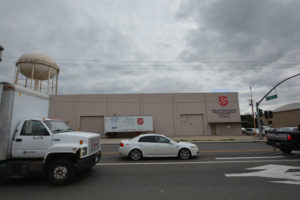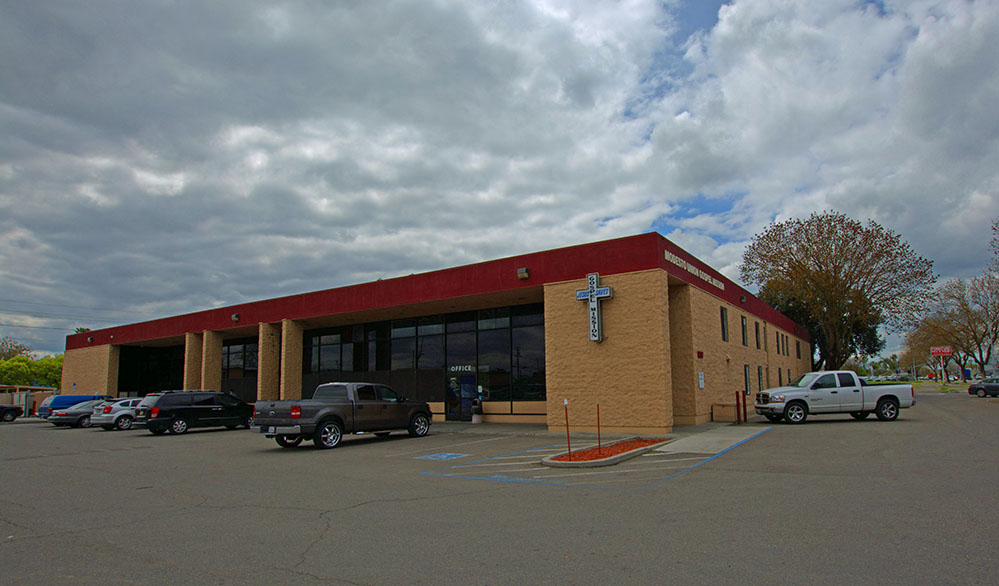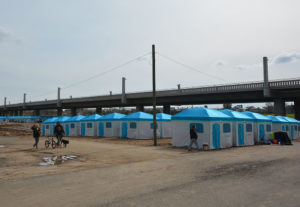
The rise in numbers of homeless shelters in the United States coincided with deinstitutionalization of the mentally ill in the late 1970s. During the same decade, runaway inflation—especially rising costs of living—left some members of the economy unable to keep up. The result was more homelessness.
Over the years, socio-economic factors have continued to contribute to a rise in homelessness and consequent demand for more homeless shelters. Today, it’s clear that the shelter option isn’t working, not just because there aren’t enough shelters, but also because the shelter concept has been internally flawed from the beginning.
Two of the key assumptions about homelessness and shelters that were marginally more appropriate forty years ago are virtually irrelevant now. One is the notion that homelessness is temporary. The other is the belief that homelessness is the result of a character flaw that can be corrected by short-term rehabilitation.
At one time, homelessness could be predicted by ebbs and flows in the economy. Homelessness rose in recessions and declined during recoveries. Homelessness was thus seen as a temporary result of a weak economy. Today, even in the midst of an economic boom, homeless numbers remain relatively static, mostly because of changes in the nature of the economy itself.

It was Ronald Reagan who first popularized the idea that some people choose to be homeless:
“What we have found in this country, and maybe we’re more aware of it now,” Reagan said, “is one problem that we’ve had, even in the best of times, and that is the people who are sleeping on the grates, the homeless who are homeless, you might say, by choice.”
Like many before and after him, President Reagan made no distinction between homeless people who might be sick, disabled, or mentally ill and the able-bodied; he just assumed anyone who was homeless had decided not to work. Reagan also ignored socio-economic factors; in 1984, when he remarked that homelessness was a matter of choice, the unemployment rate was 8.2%.
Though thirty-five years have passed since Ronald Reagan claimed choice was a major factor in homelessness, many people continue to ignore the large numbers of mentally ill and disabled people among the homeless population and insist homelessness is a matter of choice. They also ignore rising housing costs as a prime factor in homelessness. Today, even working people often struggle to pay the rent.
When mentally ill people were forced out of institutions, the plan was to provide assistance centers where they could get help with medication and counseling. The assistance centers never got built, and as the population grew, so did the numbers of mentally ill people with nowhere to go.
Many mentally ill people spend time in jail, and those who are violent often end up in prison. Those who go to jail tend to bounce in an out of custody, mostly because their offenses are trivial. When they’re not in jail, a large percentage are homeless; recent studies show 25 percent of homeless people are seriously mentally ill, and a total of 45 percent have some form of mental disorder. Absent long-term treatment and supervision, none of this group will be rehabilitated by a temporary stay in a homeless shelter.
The same holds true for drug addicts. Though it’s widely assumed addiction is a matter of choice, qualified professionals agree addiction is a health problem involving brain function. In the vast majority of cases, addiction can’t be addressed by a temporary stay in a homeless shelter; like mental illness, it most often requires sustained treatment by qualified professionals.
Even when homeless people find jobs there’s no guarantee they’ll become self-sufficient. Today’s tight housing market has driven rents to all-time highs and wages haven’t kept pace. For people who own virtually nothing and begin working at typical starting wages, the chances of coming up with enough money to rent even sub-standard housing are slim to none.
Shelters typically have term limits; guests are asked to leave after a specified time, which means even working people can find themselves homeless when they can’t afford to rent.

Given the multitudes of obstacles facing even homeless people who work or have incomes from disability or social security payments, more and more authorities are recommending a “housing first” strategy as the best remedy for chronic homelessness. Unfortunately, many regions in California are facing acute housing shortages—it will be months and even years before housing supplies catch up with demand.
Meanwhile, some places, including Stanislaus County, have sanctioned temporary tent encampments. But given the inadequacies of shelters and the realities of today’s housing crisis, authorities would be well advised to redefine “temporary.” Tent camps could very well be the best of all alternatives to homelessness, at least until the housing crisis abates—and that happy occasion will be a long time coming.


This is an excellent overview of the evolution of today’s homeless problems. Regrettably, the stereotypical idea that individual laziness is at the root of this crisis is all too common among some of our fellow citizens and politicians. I suspect the emerging impact of robotics and artificial intelligence on a LOT of jobs will make today’s homeless problems seem like a mere prelude over time. I hope there will be further analysis on the homeless problems in the area with recommendations for solutions (if there are any…) and the costs — which will probably be higher than anyone would like, but lower than the social and economic costs of doing nothing.
Excellent article Eric. Homelessness will continue to increase until such a time that Cities develop low cost housing alternatives for low income families.
Thanks Eric for writing on these very important community issues: when and where is there going to be adequate housing for the county’s homeless population? What is the game plan? What roles will shelters play? Are tent communities a good short-term [3-5 years] solution?
I think we were fortunate to respond to the 9th circuit court ruling in the manner we did by allowing homeless people to occupy Beard Brook Park, which gave birth to an active community of 400+ people.
It was in essence a learning environment in community building. Lessons learned were extracted and used as input for the operation of the Modesto Outdoor Emergency Shelter (MOES). One of the key lessons was that people are OK with tents. The folks who have issues with anything less than a “house like mine” aren’t the homeless, they are the NIMBYs in all our neighborhoods. Tents were housing and overtime became homes and the many homes gave birth to a village.
The village by and large took care of itself with very limited resources, but they did it for nearly six months. Want to build a community where folks take care of themselves, then treat them with dignity and with hand-ups, not hand-outs from the larger community. Another noteworthy observation was that people with mental illnesses and substance abuses were a part of the community. People with mental health issues were accepted and provided support by neighbors. Only when/if their behavior became an issue was outside support required.
From what I know of shelters, they do not provide a basis for community as they only provide for night time showers, a meal, a bed, and then folks are out for the day. Then the cycle repeats day by day. Shelters, however, are reinventing themselves by adding live-in programs as well as becoming what’s known as low barrier shelters (LBS). These shelters allow people to bring their partners, pets, and possessions, but are still only nightly; thus, people have to leave during the day. Again no basis for building community. A shelter is still a shelter as it provides no real sense of community.
For most of us, it’s a given that we not only want people experiencing homeless to have a decent place to call home, we want them to be able to have the skills, knowledge, and abilities to sustain themselves. I believe this should start in community, a community that exists in a larger environment which provides the tools necessary to assist them to the next step in their journey out of homelessness. And, being realistic, some will always need support beyond what they can personally obtain; thus, we need supportive housing first, not just housing.
Given the information we have to work with, including the dollars available in the short run, it seems very realistic that at least six 200 person tent [or similar structures] communities be established in the county.
With the knowledge we have gained from operating Beard Brook and now MOES, operating more shouldn’t be difficult.
The benefit derived from hope given by the larger community to folks living in despair will be returned many times as they have a path back into a community where they can be participating members.
Another excellent article, Eric. I’m old enough to remember the closures of the state’s mental hospitals (where one of my aunts worked and subsequently, to keep her job, transferred from Modesto to Stockton to work until that unit, too, was closed.) Since then the homeless problem has only grown, as added to the mentally ill turned out into the streets, we soon saw an influx of Viet Nam vets with problems ranging from PTSD, to drug abuse to, despite their skill sets, an inability to find work during that difficult economic period.. Since that time many years ago, things still show no turnaround on the horizon, especially when you add the many ill people who are now homeless, some likely due to the outrageous costs of healthcare/health insurance which has led many down the road to bankruptcy and loss of their homes or apartments.
As a society that contributes to roads, bridges and many other social benefits to maintain our various infrastructure needs and safety nets, it would be my preference to see the mental hospitals brought back into existence as many of these people, be they born with mental disabilities, or returning vets with injuries we cannot see on the surface, are subject to robbery, abuse of all sorts and, in some cases, serious injury or death. As a society I do not feel we should stand idly by while this happens…. but it seems we are, just as it seems we are in desperate need of reviewing our priorities as a nation should we wish to not slip to the level of a Third World country vis-a-vis the ever growing income disparities, the disappearance of our middle class as well as the concern for the least among us.
You are right Babette, and just from a moral point of view it’s hard to justify punishing people who are sick or disabled. Anyone who spends much time among the homeless soon realizes a large percentage are mentally ill or physically disabled.